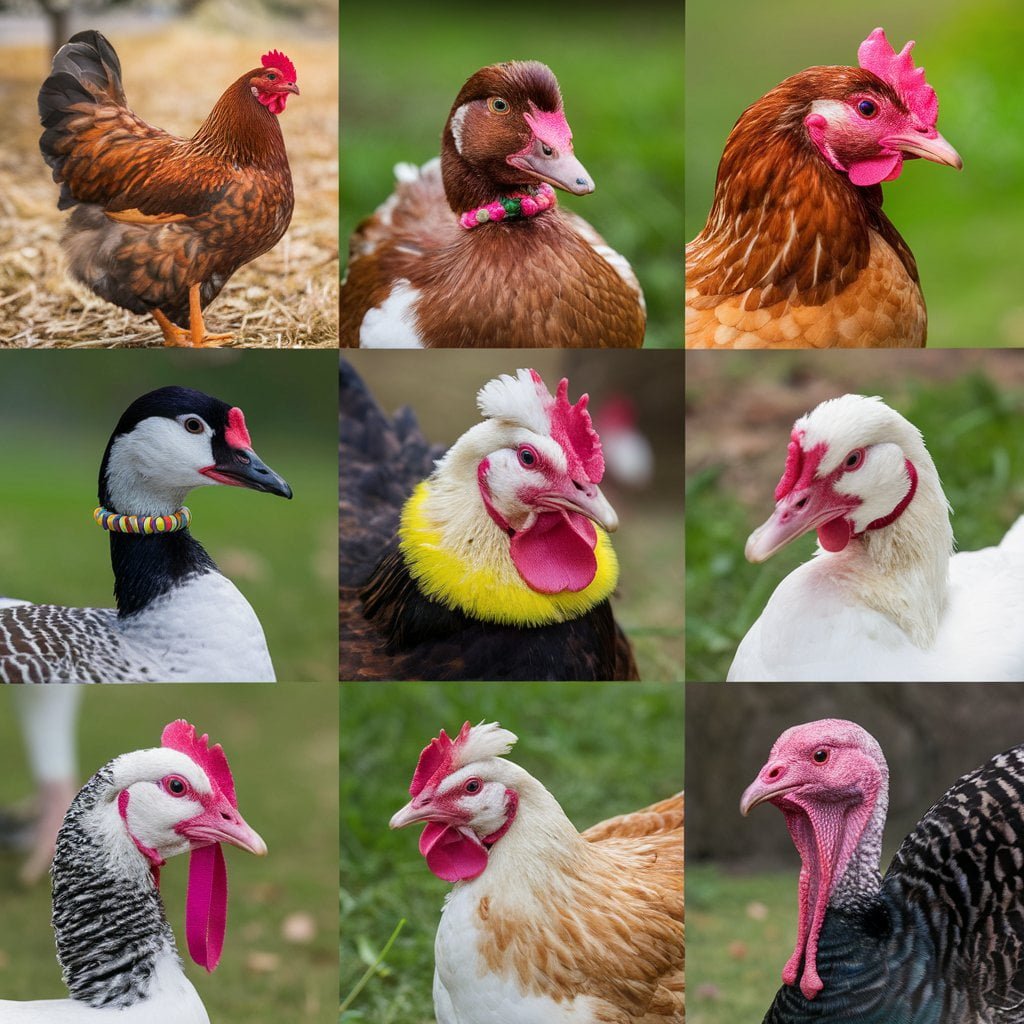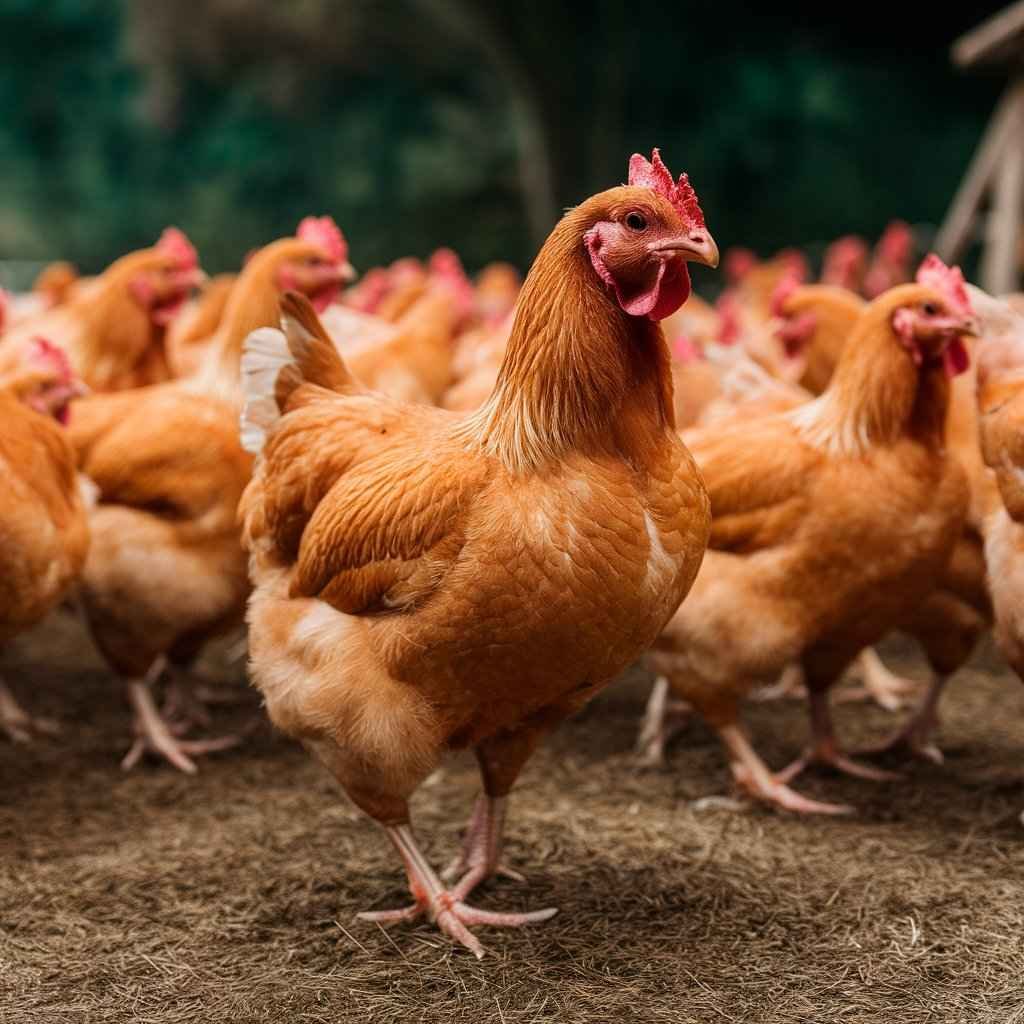Poultry breeds are divided into layers, broilers, and dual-purpose variants, each with a distinct agricultural application. Layer breeds, such as the White Leghorn, are valued for their excellent egg production, with emphasis on egg size, shell quality, and feed efficiency. Broiler breeds, such as the Cornish Cross, are selected for their rapid development, efficient feed conversion, and high meat yield, making them excellent for meat production. Dual-purpose breeds, such as the Rhode Island Red, are appropriate for both egg laying and meat production, albeit with slightly lower productivity in both than specialist varieties. Breed selection is determined by production goals, market demands, and environmental conditions that influence chicken farming practices.
Table of Contents
Introduction to Poultry Breeds
Understanding poultry breeds is essential for anyone involved in the poultry industry. Layers, broilers, and dual-purpose hens are the three main poultry breeds types. Each category serves a unique purpose, and selecting the right breed is critical for achieving certain farming objectives and increasing productivity. Historically, the development of these poultry breeds has been influenced by the different needs and demands of agriculture and poultry.
Layers are used for egg production. They are often smaller in size and have a greater metabolic rate, which aids in their prolific egg-laying ability. Leghorns, Rhode Island Reds, and Sussex are three common layer breeds. These breeds have been selectively selected over generations to optimize egg yield, making them a vital component of the egg production industry.

Broilers, on the other hand, are primarily raised for meat production. These chickens are distinguished by their quick growth, increased body size, and excellent feed conversion. Cornish Cross and Plymouth Rock are two well-known broiler breeds. The broiler sector has witnessed major advances in genetics and nutrition, resulting in birds that achieve market weight in a very short period of time, assuring a consistent supply of poultry meat to match customer demand.
Dual-purpose birds produce both eggs and meat. These poultry breeds, such as the Orpington and Australorp, provide a balanced approach, laying a respectable number of eggs while also being appropriate for meat. Prior to contemporary poultry farming specialization, dual-purpose breeds were more popular. They remain popular among small-scale farmers and backyard hobbyists who value their variety and cost-effectiveness.
Here’s a breakdown of poultry breeds based on their primary uses:
Layers: The Egg-Producing Powerhouses
Layer breeds are specifically selected for their remarkable egg producing skills. These varieties are distinguished by their smaller body size, greater efficiency in turning feed to eggs, and high laying rates. The White Leghorn is a well-known layer breed that produces enormous volumes of white-shelled eggs. Another popular poultry breeds is the Rhode Island Red, which is recognized for its hardiness and reliable brown egg production. The Sussex breed, while dual-purpose, is also known for its consistent egg output and adaptability to a variety of conditions.
To achieve best performance and happiness, a layer breed must be chosen with various things in mind. Egg size varies greatly between breeds, with some hens laying larger eggs than others. Similarly, consumers’ preferences for egg shell color vary, with white, brown, and even blue or green shells available depending on the breed. Furthermore, the disposition of the hens is important, as calmer and more docile breeds are simpler to manage, particularly in a backyard.
The lifetime of layer hens is essential to their productivity. Layer hens typically start laying eggs at 18-20 weeks of age and attain peak productivity around 25-30 weeks. During their prime, hens can lay an egg virtually every day, though output may be significantly reduced during molting or due to environmental stressors. To increase egg production, appropriate circumstances must be provided, which include proper nourishment, adequate illumination, and a stress-free habitat. A calcium-rich diet is essential for good eggshell production, and continuous lighting helps promote regular laying patterns.
Broilers: The Meat Production Champions

A specific breed of chicken raised specifically for producing meat is called a grill. For this reason, these birds are perfect as they have a number of unique characteristics. Broilers are known for their quick growth rates and effective feed conversion, which make them highly remarkable. It takes these birds comparatively less time to attain market weight because they grow more faster than other varieties of chicken. They are a viable choice for producing meat at a reasonable cost because of their efficient conversion of feed into muscle mass, which promotes faster growth.
The Cornish Cross and the Plymouth Rock are two of the most well-known breeds of broilers. Because of its exceptional growth rate and large body size, the Cornish Cross is especially popular in the poultry sector. Usually within 6-8 weeks, these birds reach their processing weight of about 4–6 pounds. Owing to its resilience and outstanding feed conversion ratio, the Plymouth Rock makes an ideal choice for producing meat, even if it grows slower than the Cornish Cross.
To guarantee the highest possible growth and health, raising broilers involves following certain best practices. Broilers require a clean, well-ventilated place with enough room for mobility, thus housing is an essential part of the process. In order to stimulate quick muscle growth, proper nutrition is crucial, with a diet high in protein. Minerals and vitamins are also essential for maintaining general health and preventing deficits.
One further crucial facet of raising broilers is health control. Disease outbreaks can be avoided by early vaccines, regular surveillance for illness symptoms, and observance of biosecurity protocols. Depending on the breed and management techniques, the normal growth period for broilers is between 6 and 8 weeks from chick to processing.
Dual-Purpose Breeds: Versatility in Poultry Farming
In chicken farming, dual-purpose breeds have a distinct advantage by yielding respectable meat yields in addition to excellent egg production. Small-scale or backyard farmers who want the advantages of both eggs and meat without having to keep separate flocks are especially drawn to these varieties. For many poultry aficionados, dual-purpose chickens are an affordable and practical option because of their versatility.
The Orpington is among the most well-liked breeds with multiple uses. Orpingtons are superb layer birds that lay a large number of eggs each year. They are noted for their calm demeanour and flexibility. They can also be used to produce meat because of their large size. Similar to the Australorp, another highly respected dual-purpose species, it is praised for its sturdy body and remarkable egg-laying ability, which make it a dependable source of both meat and eggs. The Wyandotte is a popular breed among chicken owners due to its eye-catching plumage and resilient temperament. It also produces a balanced amount of meat and eggs.
Poultry Breeds with many uses do, however, have unique benefits and drawbacks. On the plus side, they reduce overall management complexity and cost by doing away with the requirement for distinct flocks dedicated exclusively to either egg production or meat yield. Their adaptability to a variety of settings and circumstances further enhances their allure. The drawback is that pure layers or broilers may outperform dual-purpose breeds in terms of specialised performance. For example, although they lay a fair amount of eggs, they might not lay as frequently as breeds that are specifically bred to be layer dogs. In a same vein, their meat yield, while respectable, may fall short of that of specialty broilers.
A balanced approach to care and feeding is necessary for managing flocks with several purposes. It is essential to provide a food that promotes development and egg production. Maintaining a clean living space and doing routine health examinations are also critical to the flock’s wellbeing. Offering the best of both worlds in poultry production, dual-purpose chickens may be a very gratifying addition to any backyard or small-scale farming business when managed properly.
Frequently Asked Question(FAQ)
Can different poultry breeds be kept together?
Yes, however compatibility may vary. It is often easier to keep breeds with comparable sizes and temperaments together. Introduce new birds gradually to reduce stress and hostility.
What are some considerations for raising free-range poultry?
Ensure that predators are controlled or deterred.
Provide enough shelter and protection from the weather.
Grazing areas should be monitored to avoid overgrazing.
Related Articles

